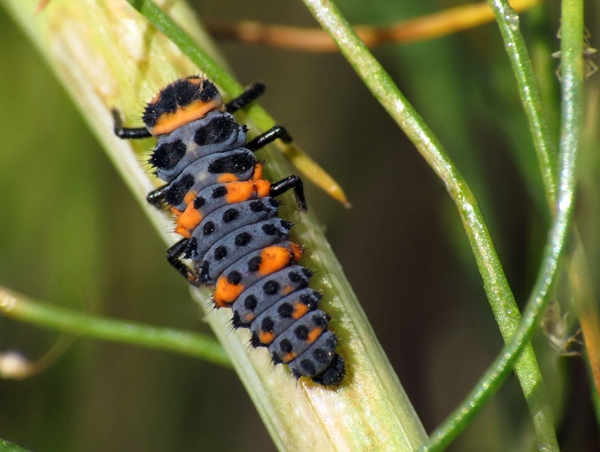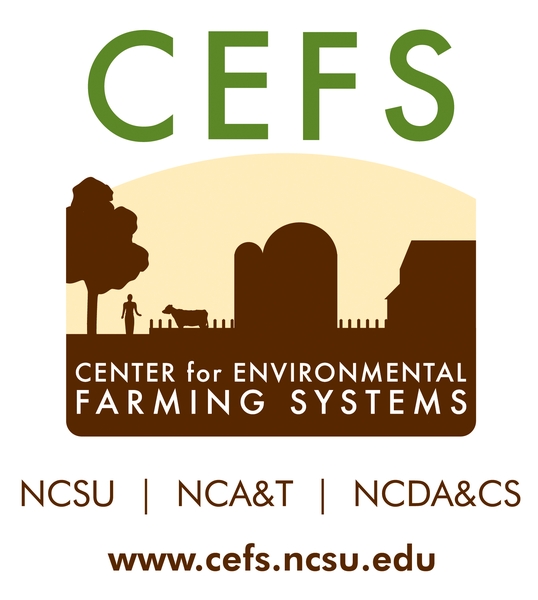Preschool gardens are a great place to introduce children to nature and the important role that insects play in growing food. Most insects are beneficial, pollinating flowers, improving soil, and eating pests. Some insects are both beneficial and harmful. For example, butterflies can be pollinators in their adult form but eat plants in their larval (caterpillar) form. Insects change form dramatically as they grow through their life cycle, so it is important to recognize your friends in each of their life stages.
Although most insects eat plants, many do little harm. Very few insects are pests and even many of the “pests” are ultimately beneficial as food for songbirds. There are a few insects that cause damage to fruit and vegetable gardens; however, it is not desirable, or even possible, to get rid of all pest insects.
Integrated Pest Management
Integrated Pest Management (IPM) uses a variety of strategies to prevent and reduce pest damage. In IPM, you begin with minor intervention and proceed with additional steps as needed.
- Cultural: Maximize plant health through the selection of disease-resistant varieties, proper irrigation, and removal of weeds competing for sunlight, water, and nutrients.
- Mechanical: Use barriers like row covers to prevent access to plants. Remove pests and drop them into soapy water.
- Biological: Gardeners recruit and support natural enemies that feed on insect pests by both including a variety of plants to provide year-round habitat, and minimizing the use of pesticides, many of which kill beneficial as well as pest insects.
- Chemical: Use pesticides to kill insects.
Children can learn to identify and help manage insect pests in the garden.
Place a leaf with the eggs of a pest insect in a jar and encourage the children to watch as the bugs progress through their life cycle. Once the eggs hatch, keep them in the jar and feed them leaves of the type of plant that the eggs were found on.
Most insects are fascinating and beneficial, though a few are pests. Learn to recognize insects in all their life stages so you will know which are friends to celebrate and which are foes to manage. When pests are identified, intervene early using Integrated Pest Management (IPM) strategies to minimize damage.
Common Beneficial Insects Found in Childcare Food Gardens
Lady Beetle
There are more than 400 different species of lady beetles in North America, many of which eat aphids, cabbageworm eggs, and other soft-bodied insect pests.
Lacewing
Lacewing larvae and adults eat aphids, mites, and scale insects.
Common Pests of Vegetable Plants
Pests of Broccoli, Cabbage, Cauliflower, Collards, and Kale
Imported Cabbageworm
- When to look: Frequently throughout the growing season. Cabbageworms may have up to eight different generations in one season!
- Where to look: Monitor for adults hovering around plants and inspect the undersides of leaves closely for individual, bullet-shaped eggs that are pale white in appearance. Magnification may be necessary since eggs are between only 0.5 and 1 mm in diameter.
- How to manage: Beneficial insect predators, parasites, and birds. Remove caterpillars by hand and drop them into a cup of soapy water. Apply Bacillus thuringiensis (Bt).
Pests of Squash and Pumpkins
Squash Bug
- When to look: Late afternoon and early evenings in the late spring and early summer. Bronze- and copper-colored eggs are laid in early summer.
- Where to look: The tops and undersides of leaves.
- How to manage: Remove and destroy leaves with eggs. Drop bugs into a cup of soapy water. Lay newspaper on the ground around plants. Squash bugs hide under newspapers at night, and can be removed and destroyed the following day.
Squash Vine Borer
- When to look: Early summer
- Where to look: Hovering around squash plants, particularly around the base of the plant.
- How to manage: Floating row covers, but remove them when plants bloom to invite pollinators. If plants wilt and do not recover overnight, remove and destroy plants to eliminate borers. Rotate squash (cucurbit) plants to different beds each year as adults overwinter in the soil near host plants. Scrape off any eggs.
Pests of Tomatoes, Eggplants, and Peppers
Tobacco and Tomato Hornworm
- When to look: Eggs are laid in late spring and larvae become active in early summer.
- Where to look: Caterpillars feed on softer parts of the plant, leaving behind only the midrib.
- How to manage: Remove caterpillars and drop them into a cup of soapy water. Caterpillars with white, barrel-shaped structures on their backs have been parasitized by a beneficial, non-stinging wasp and should not be removed. These wasps help control hornworm populations.
Fun with Insects
Books
- How to Build an Insect by Roberta Gibson
- The Very Hungry Caterpillar by Eric Carle
Videos
- "Insects Are My Life by Megan McDonald." Iredell Museums Kids! January 19, 2021. Video.
- "Guess the Insect By: Kari Noel." ELC-EVCC. April 26, 2021. Video.
Activities
Resources
- The NC State Natural Learning Initiative
- NC State Extension Gardener: Insect Information for Gardeners
- North Carolina Extension Gardener Handbook
- Chapter 4: Insects
- Chapter 8: Integrated Pest Management
- Garden Help Directory — Contact the local N.C. Cooperative Extension center in your county.
Acknowledgments
Funding for this publication was provided in part by the John Rex Endowment.
The authors would like to thank Melissa Bell, Research Associate, Center for Environmental Farming Systems Field Research, Education and Outreach Liaison, NC State University, for their management of the review process.
This publication was developed in partnership with the Natural Learning Initiative in the College of Design at North Carolina State University.
About the Local Foods Series: Childcare Center Production Gardens
This publication in the Local Foods series is the ninth of fifteen publications about childcare center production gardens:
- Growing and Cooking Fruits and Vegetables at Childcare Centers (LF-007-01)
- Creating Childcare Center Production Gardens (LF-007-02)
- Growing Warm-Season Fruits and Vegetables in Childcare Production Gardens (LF-007-03)
- Growing Cool-Season Vegetables in Childcare Production Gardens (LF-007-04)
- Snacking and Cooking with Warm-Season Produce from Childcare Production Gardens (LF-007-05)
- Snacking and Cooking with Cool-Season Produce from Childcare Production Gardens (LF-007-06)
- Composting in Childcare Center Production Gardens (LF-007-07)
- Vermicomposting in the Childcare Center Production Gardens (LF-007-08)
- Introducing Children to Insects in Childcare Center Gardens (LF-007-09)
- Easy Fruits to Grow at Childcare Center Gardens (LF-007-10)
- Growing Strawberries in Childcare Center Gardens (LF-007-11)
- Managing Weeds in Childcare Center Gardens (LF-007-12)
- Growing Fruit Trees in Childcare Center Gardens (LF-007-13)
- Growing Muscadines in Childcare Center Gardens (LF-007-14)
- Growing Blueberries in Childcare Center Gardens (LF-007-15)
Publication date: July 27, 2023
LF-007-09
N.C. Cooperative Extension prohibits discrimination and harassment regardless of age, color, disability, family and marital status, gender identity, national origin, political beliefs, race, religion, sex (including pregnancy), sexual orientation and veteran status.

























